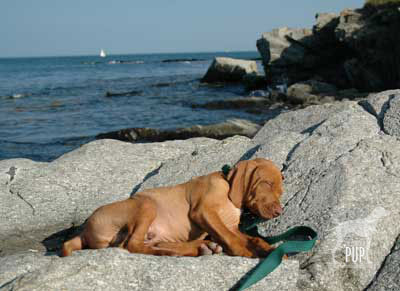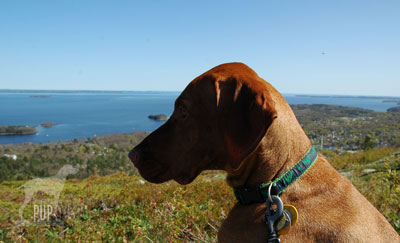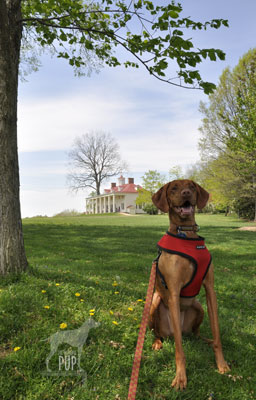
Think spring in Washington, DC and it’s synonymous with cherry blossoms. For a fleeting few days the frothy, confectionery splendor of more than 3,700 blooming cherry trees transforms the already-stunning National Mall and Memorial Parks. What makes 2012’s vernal display all the more special is that it marks the centennial of the gift of 3,020 trees from Japan. With this 100th anniversary comes an unprecedented five weeks (March 20 – April 27, 2012) of celebratory events throughout the city, ranging from concerts, special exhibitions, and performances highlighting Japanese culture, to fireworks, a kite festival, and the annual parade. The Cherry Blossom Festival, which has been an annual event in some form since 1935, today partners with the National Park Service, which in turn is offering its own activities and special ranger talks from March 24 – April 15, 2012.
The trees themselves are likely among the most scrutinized and closely monitored in the country. Tracking green buds, florets, and peduncle elongation, the National Park Service keeps meticulous data on the five stages of blossom development. While there are multiple types of cherry trees in the park, the most prevalent is the Yoshino, so the Park Service defines peak bloom as specifically being “when 70% of the blossoms of the Yoshino Cherry trees are open.” The historical average predicts the peak bloom date to be April 4th, but Mother Nature is notoriously fickle. A cold snap or a warm spell can move that date significantly in either direction, and once the blossoms are out, all it takes is one good gusty thunderstorm to toss all the pink petals from the trees.
Seeing the blossoms with the Intrepid Pup has become an annual tradition, but getting to the trees can be an adventure unto itself. The Metrorail system or biking are by far the best bets, but if you’re bringing your dog along, you’ll have to find an alternate means of transportation. Parking anywhere close to the Tidal Basin during the peak of the blossoms is a fantasy, so consider parking further away and walking back. Pedicabs seem to be a viable option, as we saw a lady and her pug zip by in one on our own most recent walk en route to the blossoms.
Bear in mind that while the outdoor venues of the National Mall and Memorial Parks are dog-friendly, you must keep your dog leashed at all times and prevent your dog from entering the Tidal Basin waters or any of the pools or fountains. As a general rule, dogs are not allowed in the inner sanctum (i.e. where the statue is) of any memorial, but Team Tavish has found that simply asking a park ranger for clarification on the boundaries is both appreciated and avoids any unnecessary confusion. And, as it turns out, many of the rangers really like dogs. The ranger we met at the Jefferson Memorial last week has been with the National Park Service for more than 20 years and was genuinely pleased to see us out exploring the monuments and blossoms with Tavish. Though the ranger regretted that she couldn’t permit him past the exterior columns on the façade, she went out of her way to give the Intrepid Pup a commemorative 100th anniversary cherry blossom pin bearing Paddles the beaver, a Park Service cartoony “mascot” that otherwise cautions visitors not to pick the blossoms. Opportunistic beavers have long tried to gnaw on the cherry tree trunks, but the ranger confided that the mesh barriers one sees around the cherry trees are good deterrents and that she had seen more raccoons and foxes than beavers so far this spring.
Dogging the Details
38°53′06.39″ N, 77°02′11.27″ W
National Cherry Blossom Festival, Washington, DC
 As mentioned above, if you don’t already live in the DC area, timing your visit to see the blossoms at their peak can be an inexact science. And be prepared to do miles of walking to fully appreciate them. For these reasons, the festival gets a “2” on the Wag-a-meter.
As mentioned above, if you don’t already live in the DC area, timing your visit to see the blossoms at their peak can be an inexact science. And be prepared to do miles of walking to fully appreciate them. For these reasons, the festival gets a “2” on the Wag-a-meter.
The Yoshino cherry trees concentrated around the Tidal Basin seem to attract the greatest flocks of blossom-gazers, and the narrow 2.1-mile walkway encircling the water’s edge can become quite congested. If you or your dog aren’t fond of pedestrian traffic jams, you have a couple of choices. Either plan your walk for the early to mid morning or late afternoon hours on a weekday (the lunch hour and nice weekends bring out tourists and locals) or stray off the well-beaten path. The Washington Monument grounds are much more open, absorb a lot of people, and boast numerous cherry trees representing yet another gift from Japan, this one to Lady Bird Johnson in 1965. Or, just a short distance east of the Jefferson Memorial you’ll find access to Ohio Drive, SW. This road and adjacent sidewalk loop 4.1 miles around East Potomac Park and Hains Point, and the whole way is lined with cherry trees! While your vistas from here won’t be of the monuments, you will have lovely views of the Washington Channel and the Virginia banks of the Potomac River. It’s on this route that you’ll discover completely different species of cherry trees: Kwanzan, Japanese weeping cherries, Takesimensis, Yama-zakura, and a single Okame cherry tree. There’s also an interesting grove of cherry trees on the golf course—land once a research area for the U. S. Department of Agriculture (USDA)—that likely represent the oldest anywhere in the park. Although 1912 is commonly cited as the year of the gift of the celebrated trees, Japan actually first sent 2,000 trees to Washington two years earlier in 1910. Sadly, those trees arrived with infestations, and after unsuccessful treatments, President Taft—at the recommendation of the USDA—ordered that they all be burned. It appears, however, that the precious few in this outcropping miraculously survived.
Finally, be sure to bring a camera. Pale pink cherry blossoms against granite memorials and a clear blue sky ought to be on your “bucket list” of backdrops for great family photographs.

 If you’ve always associated Maine with craggy shorelines, there are plenty. But you might be surprised to learn that beautiful sandy beaches can be found in coastal towns throughout southern Maine. One favorite is Kennebunk Beach. At low tide, this crescent-shaped swath of sand extends out about a hundred yards before receding into the Atlantic Ocean. Then, if you could even see this far, the next land you’d spot would be Portugal. Seriously. The surrounding communities, collectively known as the Kennebunks, are tourist magnets (particularly in the summer and fall), but Kennebunk Beach holds a year-round allure even after temperatures for swimming and sun-bathing are but distant memories. The sidewalk follows the shoreline and is great for dog-walking, complete with several waste receptacles and doggie-bag dispensers. In fact, this same scenic route along the seawall is used by the area’s Animal Welfare Society for its insanely popular (and fun) annual “Strut Your Mutt” fundraiser.
If you’ve always associated Maine with craggy shorelines, there are plenty. But you might be surprised to learn that beautiful sandy beaches can be found in coastal towns throughout southern Maine. One favorite is Kennebunk Beach. At low tide, this crescent-shaped swath of sand extends out about a hundred yards before receding into the Atlantic Ocean. Then, if you could even see this far, the next land you’d spot would be Portugal. Seriously. The surrounding communities, collectively known as the Kennebunks, are tourist magnets (particularly in the summer and fall), but Kennebunk Beach holds a year-round allure even after temperatures for swimming and sun-bathing are but distant memories. The sidewalk follows the shoreline and is great for dog-walking, complete with several waste receptacles and doggie-bag dispensers. In fact, this same scenic route along the seawall is used by the area’s Animal Welfare Society for its insanely popular (and fun) annual “Strut Your Mutt” fundraiser. Team Tavish dug back into the Intrepid Pup archives for this pic of an approximately 11-week-old Tavish on one of his very first trips to what would become a frequent destination: Peaks Island. Of the several hundred island communities that dot Casco Bay, Peaks is the most populous with ~1,100 year-round residents, though that number swells to 4,000+ during the summer months. Peaks is actually part of the City of Portland, but its history has been punctuated by various—and as yet, unsuccessful—secessionist movements. It’s accessible via a 15-minute ride from downtown Portland on the Casco Bay Lines
Team Tavish dug back into the Intrepid Pup archives for this pic of an approximately 11-week-old Tavish on one of his very first trips to what would become a frequent destination: Peaks Island. Of the several hundred island communities that dot Casco Bay, Peaks is the most populous with ~1,100 year-round residents, though that number swells to 4,000+ during the summer months. Peaks is actually part of the City of Portland, but its history has been punctuated by various—and as yet, unsuccessful—secessionist movements. It’s accessible via a 15-minute ride from downtown Portland on the Casco Bay Lines  Camden
Camden “First in war, first in peace and first in the hearts of his countrymen….”
“First in war, first in peace and first in the hearts of his countrymen….”









